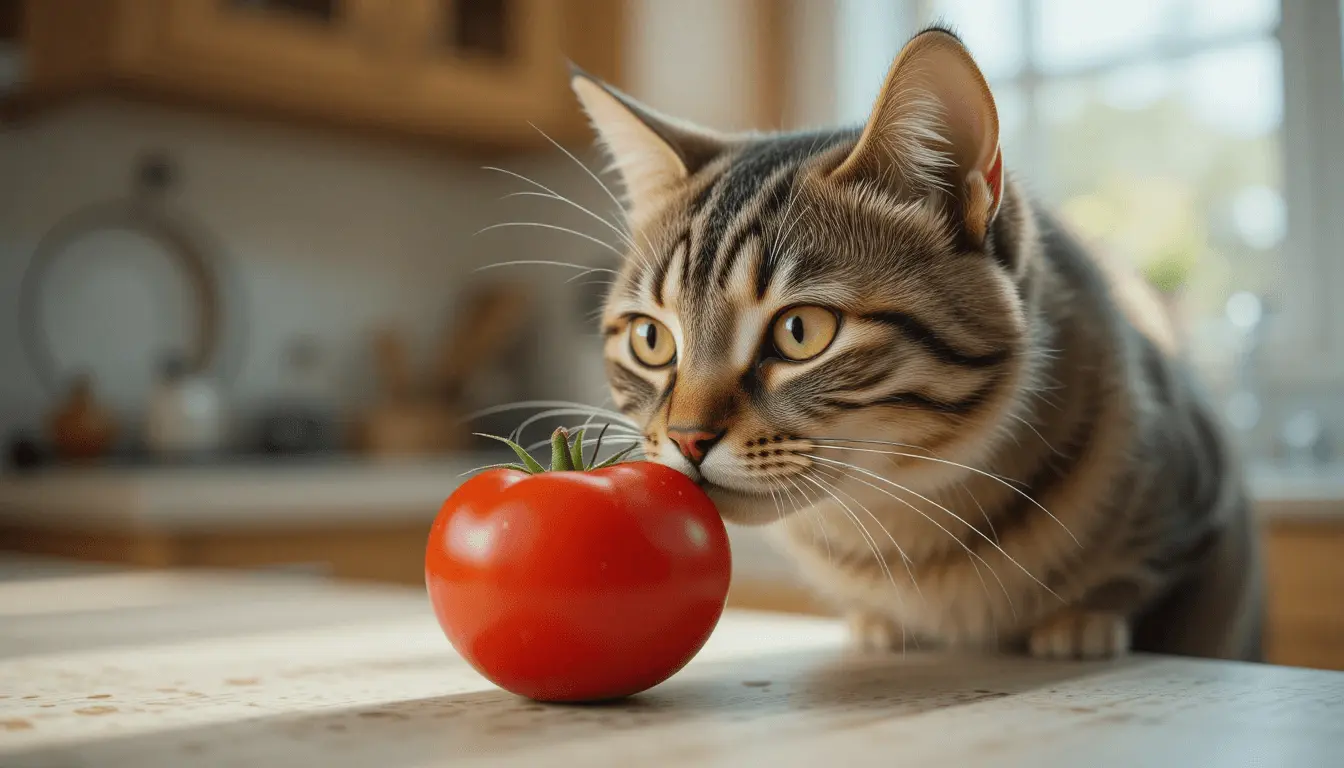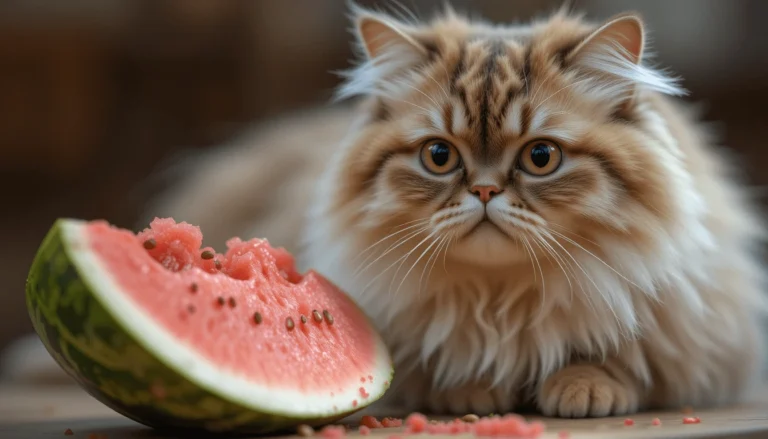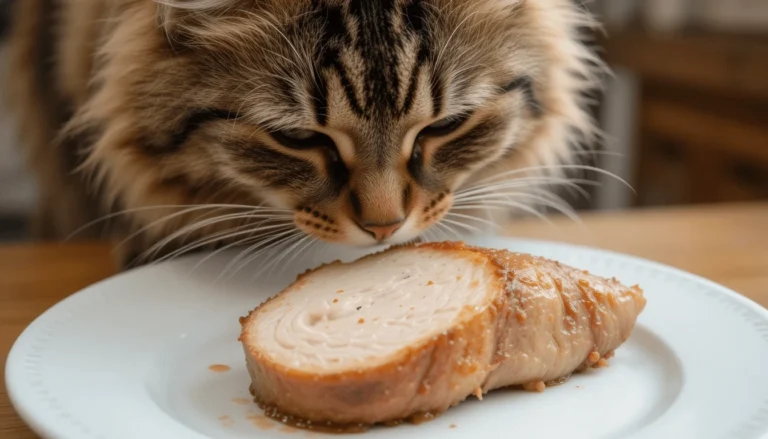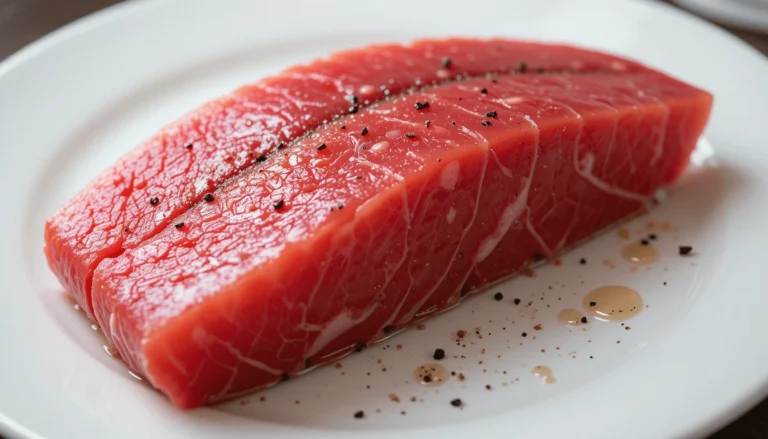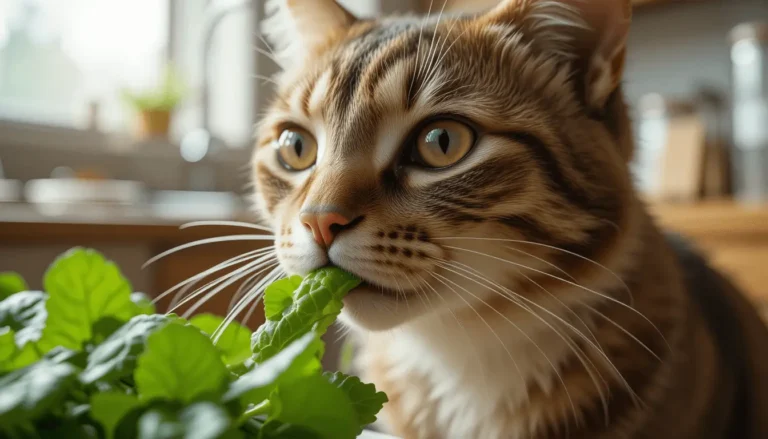Can Cats Eat tomatoes? Risks, Toxicity, and Safe Alternatives
Introduction
One evening, as I chopped fresh tomatoes for a salad, my curious cat, Whiskers, leaped onto the counter, eyeing the juicy red slices. Before I could react, she took a tiny nibble—panic set in. Can cats eat tomatoes safely, or was Whiskers in danger? If you’ve ever wondered whether tomatoes are safe for your feline friend, this guide covers the risks, toxicity concerns, and vet-approved alternatives to keep your cat healthy.
Are Tomatoes Toxic to Cats?
Tomatoes belong to the nightshade family (Solanaceae), which includes plants with naturally occurring toxins. While humans can safely enjoy tomatoes, cats process certain compounds differently, making even small amounts potentially harmful.
The Danger of Solanine
The biggest danger in tomatoes for cats comes from solanine – a natural toxin that’s especially concentrated in the green parts of the plant. Unripe green tomatoes, stems, and leaves contain the highest levels of this harmful compound. The ASPCA warns that when cats ingest solanine, it can trigger both digestive issues and concerning neurological reactions
Even small doses may lead to:
- Drooling
- Upset stomach
- Loss of coordination
Key Takeaway: Never let your cat chew on tomato vines or unripe tomatoes—the solanine content is highest in these parts.
Ripe vs. Unripe Tomatoes
Though ripe red tomatoes contain less solanine than their unripe counterparts, they still pose risks for feline friends. Even these ‘safer’ red tomatoes contain tomatine, another compound that can upset your cat’s sensitive digestive system. While an occasional tiny nibble might not cause harm, tomatoes offer no nutritional benefits to obligate carnivores like cats – making them a snack best avoided altogether.
Here’s a quick comparison:
| Tomato Type | Solanine Level | Risk to Cats |
|---|---|---|
| Green (unripe) | High | Dangerous |
| Ripe (red) | Low | Mild risk (best avoided) |
| Stems & Leaves | Very High | Toxic |
Pro Tip: If your cat accidentally licks a bit of ripe tomato, monitor for vomiting or diarrhea. However, repeated exposure isn’t recommended.
Symptoms of Tomato Poisoning
How do you know if your cat has eaten too much tomato? Watch for these warning signs:
- Vomiting or diarrhea – The most common reaction.
- Lethargy – Unusual tiredness or weakness.
- Loss of appetite – Refusing food for more than 12 hours.
If you notice these symptoms, contact your vet or the Pet Poison Helpline immediately. Early intervention can prevent serious complications.

Safe Ways to Offer Tomatoes (If at All)
While tomatoes aren’t recommended for cats, some pet owners wonder if small, controlled portions could be safe. Here’s what you need to know before sharing this risky snack.
Tiny Amounts Only
If you must let your cat try tomato, follow these strict guidelines:
- Only offer fully ripe, red tomato flesh (no seeds, skin, or green parts).
- Limit to less than a teaspoon—just a lick or two.
- Never make it a regular treat—tomatoes provide no nutritional benefit to cats.
Why? Even ripe tomatoes contain trace tomatine, which some cats may tolerate poorly. According to a study in the Journal of Animal Physiology and Animal Nutrition, cats lack the enzymes to efficiently process plant-based compounds, making even “safe” human foods potentially problematic.
Remove Stems & Leaves
The most toxic parts of the tomato plant are the:
- Leaves
- Stems
- Unripe fruit
- Flowers
These contain 10x more solanine than ripe fruit. If you grow tomatoes at home, keep plants in hanging baskets or behind pet-proof barriers. According to the Pet Poison Helpline, tomato plants pose a moderate toxicity risk to both cats and dogs.
Cooked vs. Raw Tomatoes
You might assume cooking reduces risks, but:
- Boiling/steaming slightly lowers tomatine levels, but doesn’t eliminate solanine.
- Tomato sauces/soups often contain garlic/onion (toxic to cats) and high sodium.
- Sun-dried tomatoes are concentrated in solanine and salt.
Verdict: There’s no safe preparation method. Skip tomatoes altogether and choose better alternatives.
Healthier Alternatives to Tomatoes for Cats
Being obligate carnivores, cats evolved to derive all essential nutrients from meat – their digestive systems simply aren’t designed to process plant matter efficiently. However, these vet-approved options can satisfy their curiosity without risks:
Cat-Safe Vegetables
These can be offered occasionally in bite-sized pieces:
- Steamed carrots (softened, no seasoning)
- Blanched zucchini (peeled, seeds removed)
- Fresh cucumber slices (low-calorie hydration boost)
Note: Always introduce new foods slowly to check for allergies.
Fruits Cats Can Eat
A few seedless, peeled fruits are safe in moderation:
- Blueberries – Antioxidant-rich, served whole or mashed.
- Watermelon – High water content (remove rind and seeds).
- Apple slices – Peeled and cored (no stems/seeds).
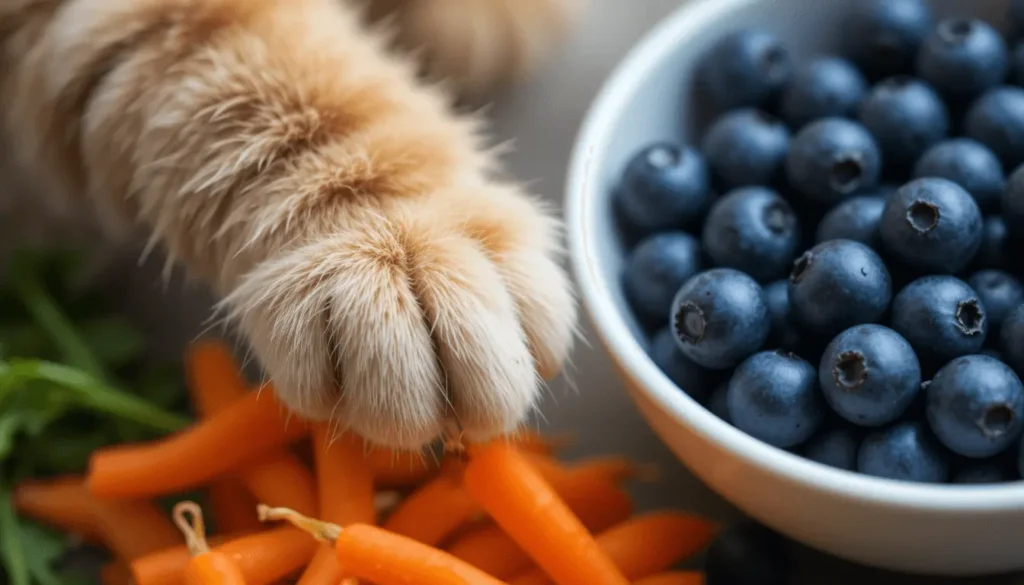
Avoid: Grapes, raisins, cherries—these are highly toxic.
Commercial Cat Treats
For a 100% safe option, choose:
- Freeze-dried meat treats (chicken, salmon)
- Dental health chews (VOHC-approved)
- Homemade dehydrated meats (no salt/spices)
Pro Tip: Check the AAFCO guidelines to ensure treats meet feline nutritional standards.
Conclusion: Better Safe Than Sorry
Can cats eat tomatoes? While the occasional lick of ripe tomato flesh likely won’t harm a healthy cat, the potential risks—from solanine poisoning to digestive upset—far outweigh any benefits. With so many safer, cat-friendly alternatives available, it’s easiest to keep tomatoes off your pet’s menu entirely.
Did Your Cat Ever Steal a Tomato? Share your story in the comments! For more feline nutrition tips, explore our guide on [Human Foods Toxic to Cats].
Additional Resources
- Safe Or Not ? Cat Food Guide
- Cornell University College of Veterinary Medicine – Feline Nutrition
- Journal of Veterinary Emergency and Critical Care – Solanine Poisoning Cases
- AVMA’s Pet Poison Prevention Tips
FAQs: Can Cats Eat Tomatoes?
What happens if my cat eats a small piece of tomato?
A tiny lick or bite of ripe red tomato flesh may cause mild stomach upset (vomiting or diarrhea) in some cats, but serious toxicity is unlikely. However, monitor for 24 hours and contact your vet if you notice:
- Excessive drooling
- Lethargy
- Loss of appetite
Resource: ASPCA’s Tomato Toxicity Guide
Are tomato plants more dangerous than the fruit?
Yes. Tomato leaves and stems contain 10–20x more solanine than ripe fruit. Ingesting even a small leaf can cause:
- Dilated pupils
- Tremors
- Difficulty breathing
If suspected, call the Pet Poison Helpline immediately.
Can cats eat cooked tomatoes or ketchup?
No. Cooking doesn’t fully eliminate solanine, and processed tomato products (ketchup, sauce) often contain:
- Garlic/onion (toxic to cats)
- High salt/sugar (risks dehydration or obesity)
Resource: FDA’s Pet Food Safety Guidelines

